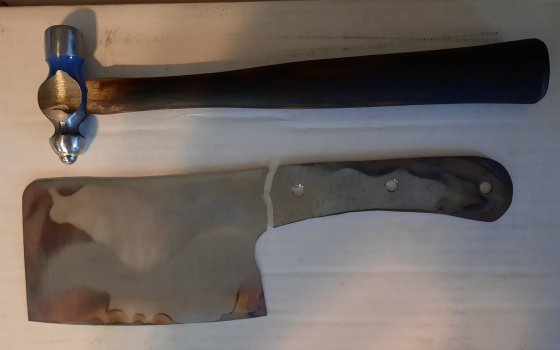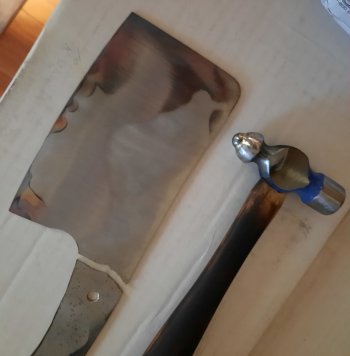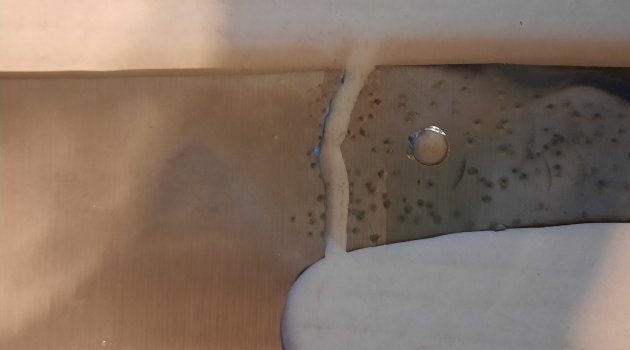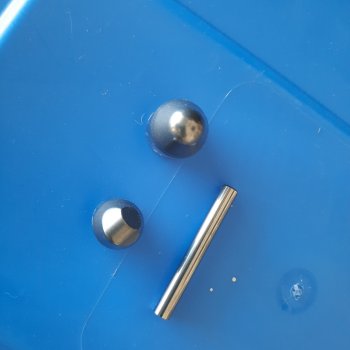CDHumiston
Well-Known Member
This blade came out of heat treat and temper warped. It measured at 61HRC. I made my first attempt at straitening with my Carbide tipped hammer.
Not sure if I was hitting it too hard or if my temper was off and it was brittle? Anyhow...I have my first broken blade.
The heat treat looks good to me. Anyone see an issue?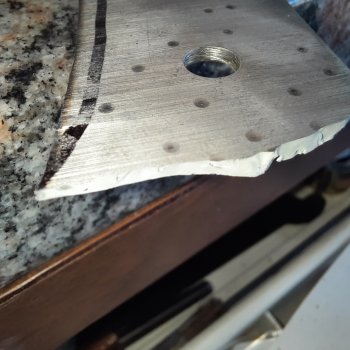
Not sure if I was hitting it too hard or if my temper was off and it was brittle? Anyhow...I have my first broken blade.
The heat treat looks good to me. Anyone see an issue?


